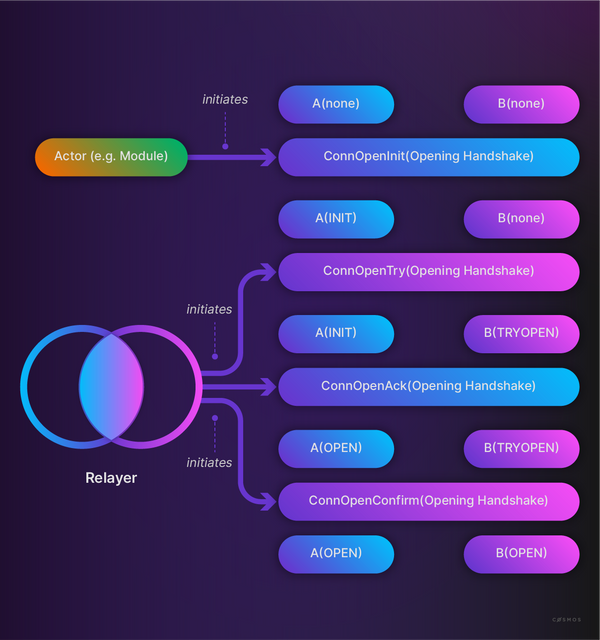IBC Relayers
IBC (Inter-Blockchain Communication) relayers act as intermediaries between two independent blockchain networks, enabling them to communicate and exchange value. They are software programs that facilitate communication between two blockchain networks that support IBC.
The IBC protocol consists of two layers: the TAO layer, which is responsible for the core functionality of IBC, and the APP layer, which enables the development of application-layer protocols on top of TAO. The TAO layer allows connected blockchains to send packets of information via dedicated channels, using smart contract modules that include a light client for trustlessly verifying the validity of the state sent by the other blockchain.

Relayers play a vital role in the functioning of the IBC protocol, handling a large number of transactions simultaneously. However, congestion events can still occur, and relayers are scaling up their infrastructure to address this issue. Users can support relayers by delegating their tokens to the validators that also operate IBC relayers, which encourages them to continue operating at a loss on their relayer nodes. This support also encourages more validators to set up their own relayer infrastructure, further enhancing the capabilities of the IBC protocol.
Currently, there are 70 networks that have enabled IBC, with over 60 million transactions executed using IBC per month. Relayers can open paths across chains, create clients, connections, and channels, and operate on multiple blockchains in the Cosmos ecosystem.